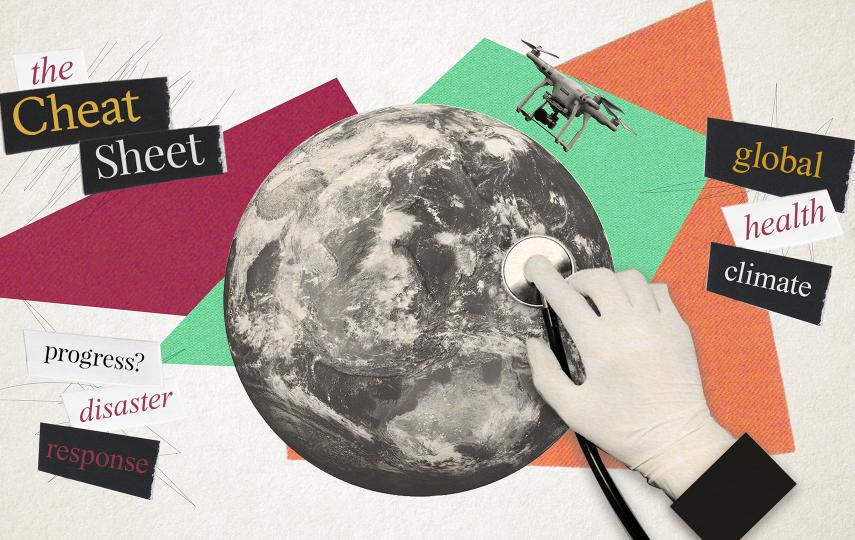The target of 475,000 stoves was set by the National Rural and Renewable Energy Programme, a new effort to bring all rural energy programmes under one management and funding body, and will be implemented by the Alternative Energy Promotion Centre (AEPC) , an autonomous government agency. The programme is supported by Denmark, Norway and the UK Department for International Development, among others.
“This should be of utmost priority. It is a problem of the really poor people of Nepal,” said Mrigendra Raj Pandey, a cardiologist and the first person to identify the health hazards of domestic smoke more than 40 years ago.
Most rural households in Nepal use traditional stoves that burn biomass - mainly wood, but also agricultural residue and animal dung - for cooking and heating. Such stoves are highly inefficient and emit large amounts of smoke that contribute to indoor air pollution.
There is strong evidence that indoor pollution causes pneumonia and other acute respiratory infections among children under five, and chronic obstructive pulmonary disease and lung cancer in adults, according to the World Health Organization.
An estimated 7,500 Nepalese die each year due to indoor air pollution, with women and children being most affected because they usually prepare food for the household and so are in the kitchen and close to the stove for longer.
Improved cooking stoves are designed to limit these negative health effects by burning biomass more efficiently and reducing smoke. Nepal has constructed 621,000 such stoves, benefiting three million people, since 1999, when DANIDA, the Danish development agency, set up the Energy Sector Assistance Programme (ESAP) at AEPC.
AEPC is also a partner of the Global Alliance for Clean Cookstoves, a public-private partnership which aims to reach 100 million households with clean stoves and fuels by 2020.
Under the scheme in Nepal, users pay US$6-17 to build a mud-brick improved stove, depending on the quality of material used and cost of labour in the area, said Karuna Bajracharya, manager of the ESAP Biomass Energy Support Programme.
The government puts in an additional $8 per unit for technical assistance, awareness-raising and quality control. Metal stoves are more expensive at $90, for which a 50 percent government subsidy is available to households at elevations above 1,500 metres.
A 2008 assessment of the health impacts of using the improved stove, conducted for ESAP by the Environment and Public Health Organization (ENPHO), a Nepalese NGO, found a 60 percent drop in the key indicators of indoor air pollution. Women and children reported a decrease in coughing, headaches and eye irritation, although long-term research is needed to assess the actual health benefits.
“When I used to cook on my old stove, my eyes would water from the smoke,” Mangal Nepali, 18, a taxi driver from the Dang-Deukhuri District, told IRIN in the capital, Kathmandu. He got a new stove three months ago. “It cooks food faster, uses less firewood, and all the smoke goes outside,” he said.
To date, the government has trained 8,000 people to build improved stoves as part of ESAP. They can construct up to five a month, earning $6 per stove, said Bajracharya. In the past 10 years, Bishnu Maya Tamang of Dolakha District in central Nepal has built scores of stoves and hopes to build many more. “There is still a lot of demand for them,” she said.
AEPC’s new target of 475,000 more stoves over the next five years will be almost twice the number built in the last decade. “The ICS [improved cooking stove] sector has become more efficient and effective. The momentum will continue to grow,” Bajracharya said, but the challenge will be in reaching less accessible communities at higher altitudes, and the very poor.
She pointed out that even if the target is achieved, more than three million households will still be using traditional stoves. “Some households cannot even afford to pay 300 [Nepalese] rupees [$3] for a stove. The government should design subsidy programmes for these needy people.”
sm/ds/he
This article was produced by IRIN News while it was part of the United Nations Office for the Coordination of Humanitarian Affairs. Please send queries on copyright or liability to the UN. For more information: https://shop.un.org/rights-permissions





